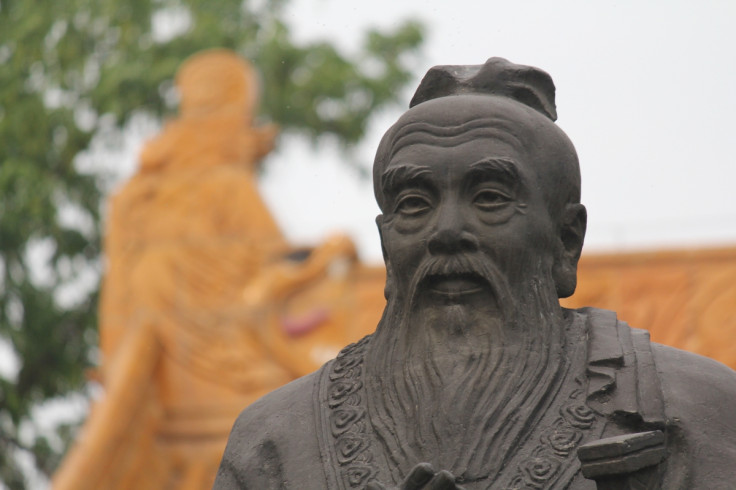Oldest portrait of ancient Chinese philosopher Confucius unearthed by archaeologists

Archaeologists in China believe that they have unearthed the oldest portrait of ancient Chinese philosopher Confucius. The painting was found in a tomb, which experts believed belonged to Liu He, grandson of Emperor Wu of the Han Dynasty, which is at least 2,000 years old.
Two paintings were found inside the tomb dating back to between 206 BC and 24 AD in the Jiangxi province, both of which have been restored. The other painting is of Yan Hui, a disciple of Confucius, according to markings on a broken lacquer screen that was found in the burial place.
Zhang Zhongli, deputy chief of the excavation team, told the Xinhua news agency: "The Chinese characters on the screen include the names of Confucius, his father, Shu Lianghe, and one of his favourite disciples, Yan Hui. These names are evidence that at least one of the two men painted on the screen is Confucius himself."
What ancient sage #Confucius looks like?2,000-yr-old portrait unearthed from tomb may have hint #XinhuaTV pic.twitter.com/5zKgIa0a6Y
— China Xinhua News (@XHNews) November 16, 2015Zhang added that more text was found on the screen which he believes is a biography of the philosopher, but more research is needed on this to confirm. The screen, which is 50 to 60 cm wide and 70 to 80 cm tall, has since been restored and was a common decoration in ancient Chinese homes, with the people believing that they would block evil spirits.
"We assume the tomb owner respected Confucius and had a Confucius portrait painted on the screen," said Zhang. "After he died, his family buried his favourite screen with him, even though such screens were not conventional burial items in Chinese funerary customs." The portrait of Confucius outlines how his teachings were prevalent among the elite Western Han Dynasty, he added.

Xin Lixiang, head of the excavation team, added: "This is the earliest portrait of the ancient sage discovered so far."
© Copyright IBTimes 2025. All rights reserved.






















